Introduction
The transformative potential of the Industrial Internet of Things (IIoT) in e-commerce is substantial, offering numerous benefits that are integral to the modernization of online business operations. Through the lens of Industry 4.0, companies are witnessing a sea change in manufacturing and industrial processes, with IIoT providing unprecedented operational efficiency and personalization. From enhanced supply chain visibility to real-time data analytics, IIoT is revolutionizing decision-making and providing a competitive edge in an interconnected world.
However, cybersecurity and sustainability measures must be prioritized to ensure operational resilience and customer trust. The adoption of IIoT is not just a trend but a keystone for businesses aiming to bolster efficiency, slash costs, and drive innovation, all while offering an exceptional customer experience.
Why IIoT is Crucial for E-commerce Success
The transformative potential of the Industrial Internet of Things (IIoT) in e-commerce is substantial, offering numerous benefits that are integral to the modernization of online business operations. Through the lens of Industry 4.0, which is characterized by the integration of advanced technologies such as IoT networks, cognitive computing, and automation, companies are witnessing a sea change in manufacturing and industrial processes. The data-driven nature of IIoT provides unprecedented operational efficiency by enabling real-time monitoring and automation that streamline e-commerce processes from inventory to delivery.
Personalization has become a cornerstone of customer satisfaction in e-commerce, and IIoT technologies are at the forefront of delivering seamless, tailored experiences to consumers. These sophisticated systems, with rigorous security and operational control requirements, enhance the customer journey, fostering loyalty and repeat business.
Visibility and transparency across the supply chain are enhanced through IIoT, allowing for meticulous inventory management and logistics optimization. As reported in recent case studies, companies that embrace digital transformation, such as implementing an upgraded Enterprise Resource Planning (ERP) system, are reaping the benefits of efficiency and scalability. These studies showcase a spectrum of IIoT and Industry 4.0 projects, highlighting the objectives and outcomes of digitalization efforts.
Furthermore, the analysis of real-time data through IIoT facilitates informed decision-making and predictive analytics, which is crucial for anticipating market trends and customer needs. This approach not only saves costs by optimizing energy usage and maintenance but also provides businesses with a competitive advantage, enabling them to swiftly respond to market dynamics.
In a landscape where connected devices are proliferating and the threat of cyber attacks is rising, the strategic implementation of IIoT technologies is not just a matter of advancement but of necessity. As noted by industry experts, considering the perspectives of various stakeholders, from finance to manufacturing management, is critical for the successful adoption of IIoT solutions. The collective insights contribute to a holistic view of the operational and strategic benefits that IIoT offers, positioning e-commerce businesses for success in an increasingly digital and interconnected world.
List of IIoT Applications for E-commerce
Harnessing the power of the Industrial Internet of Things (IIoT) has become a pivotal driver in the evolution of e-commerce operations, offering unprecedented opportunities for businesses to improve efficiency, cut costs, and elevate customer experiences. Let's explore the transformative applications of IIoT that are shaping the e-commerce landscape:
-
Predictive Maintenance and Asset Management: By employing IIoT technologies, e-commerce entities can anticipate equipment failures and schedule timely maintenance, thereby reducing downtime and extending the lifespan of valuable assets.
-
Supply Chain Optimization: IIoT enables real-time tracking and management of goods, from procurement to delivery, streamlining the supply chain and reducing bottlenecks.
-
Inventory Management and Tracking: Advanced sensors and RFID tags provide accurate stock levels and location data, ensuring optimal inventory control and minimizing losses.
-
Enhanced Customer Experience through Personalization: IIoT devices gather and analyze customer data, enabling personalized marketing and tailored shopping experiences that enhance customer satisfaction.
-
Real-Time Data Analytics for Decision Making: IIoT facilitates the collection and analysis of vast amounts of data, assisting decision-makers in crafting strategies backed by real-time insights.
-
Smart Warehousing and Logistics: Automation and smart systems driven by IIoT not only increase warehouse efficiency but also improve the accuracy of picking and packing processes.
-
Cybersecurity Measures for IIoT Devices: With the growing number of connected devices, robust cybersecurity measures are essential to protect data integrity and prevent breaches.
-
Energy Efficiency and Sustainability: IIoT promotes sustainable practices by monitoring and managing energy consumption, leading to reduced environmental impact and operational costs.
These applications are not just theoretical; they are grounded in real-world success stories. For instance, a recent case study highlighted the integration of an upgraded ERP system as a foundational step towards digital transformation, showcasing the tangible benefits of IIoT in action. Additionally, the emergence of checkout-free stores, like the pioneering Zippin technology-enabled store in Dublin Airport, exemplifies how IIoT is revolutionizing the retail experience.
Moreover, the industrial sector's embracement of IIoT, as outlined by IoT Analytics' definition of 'Industry 4.0', demonstrates a commitment to modernizing operations. By leveraging IIoT, manufacturers have seen improvements in overall equipment effectiveness (OEE) and key performance indicators (KPIs), leading to more efficient and cost-effective production.
In light of these advancements, it's clear that IIoT is not just reshaping industrial processes but also fundamentally altering the e-commerce domain, offering a competitive edge to those who embrace its potential. As we continue to witness the proliferation of connected devices and the ever-present threat of cyber attacks, the importance of IIoT in ensuring operational resilience and customer trust cannot be overstated.
Predictive Maintenance and Asset Management
In the dynamic realm of e-commerce, IIoT technologies are proving to be a linchpin for operational excellence. With the industry's shift towards digital transformation initiatives, manufacturers are now looking beyond manual efforts, steering towards digitally enabled solutions such as digital twins, AI, and machine learning to meet rising consumer demands for personalized products, competitive pricing, and swift delivery. The integration of IIoT enables real-time monitoring of assets, facilitating a strategic shift from reactive to proactive maintenance.
This not only mitigates downtime but also curtails repair expenses significantly. Moreover, the application of predictive analytics through IIoT is revolutionizing asset management by foreseeing potential malfunctions, thereby enhancing asset utilization and ensuring uninterrupted customer satisfaction. As highlighted by recent case studies, this approach to maintenance is not just a theoretical ideal; it is a practical strategy that has been adopted and refined by forward-thinking companies, leading to improved operational efficiency and cost savings.
The advent of checkout-free stores like the Zippin-powered outlet at Dublin Airport illustrates the practical deployment of IIoT, where a seamless blend of cameras and sensor-equipped shelving systems creates a frictionless shopping experience. Such innovations underscore the importance of IIoT in not only maintaining assets but also in redefining the customer experience in e-commerce.
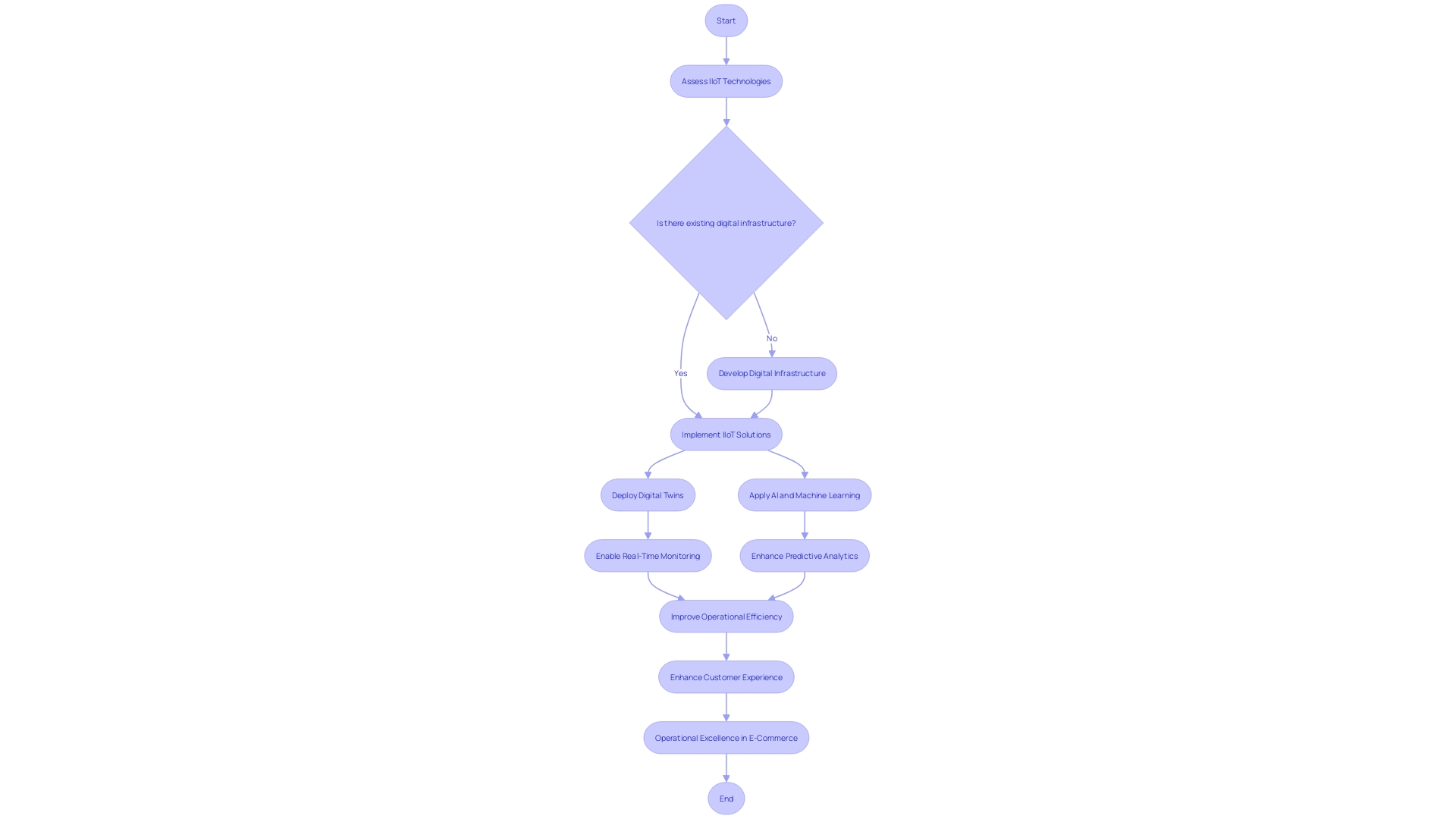
Supply Chain Optimization
Harnessing the power of the Industrial Internet of Things (IIoT) has proven to be a game-changer in the realm of e-commerce, particularly within supply chain management. Companies like Siemens Digital Enterprise are leading by example, showing that integrating modern technologies such as artificial intelligence, digital twins, and IT/OT convergence can dramatically enhance operational efficiency and sustainability. The Electronics Factory Erlangen, for instance, has become a model of digital enterprise by embracing these technologies, which serve to empower the workforce and push the boundaries of innovation in manufacturing.
IIoT applications offer comprehensive real-time monitoring and tracking capabilities for goods in transit, which is essential for maintaining transparency and ensuring the visibility of items throughout the entire supply chain. These advancements are crucial in addressing common supply chain challenges, such as avoiding stockouts and streamlining order fulfillment processes. By employing digital platforms, tracking devices, and digital locks, businesses can exert greater control over their supply chains, improving the reliability of the data they depend upon for decision-making.
However, it's important to consider the architecture of IoT and its implications on security, as highlighted by industry experts like Robin Duke-Woolley and Bill Ingle from Beecham Research. With an increasing number of connected devices, there's a corresponding rise in cyber threats, making device security a cornerstone for trustworthy IoT applications in e-commerce.
To truly appreciate the potential of IIoT in enhancing supply chain operations, one must look at the broader picture of Industry 4.0. IoT Analytics defines this as the integration of modern tech stack elements or supporting technologies that enable manufacturers to consolidate data sources, achieve heightened operational equipment efficiency (OEE), and enhance key performance indicators (KPIs) relevant to production. This integration is often exemplified in the strategic implementation of new or improved use cases within the manufacturing sector.
Advancing towards a smarter and more efficient manufacturing process is not just about adopting new technologies; it's about understanding the pros and cons from multiple perspectives, including finance, IT, manufacturing management, and floor supervisors. As we navigate through various approaches to digital transformation, it's critical to maintain an open mind and consider insights from all levels of the organization, ensuring the successful adoption and scaling of IIoT solutions in e-commerce operations.
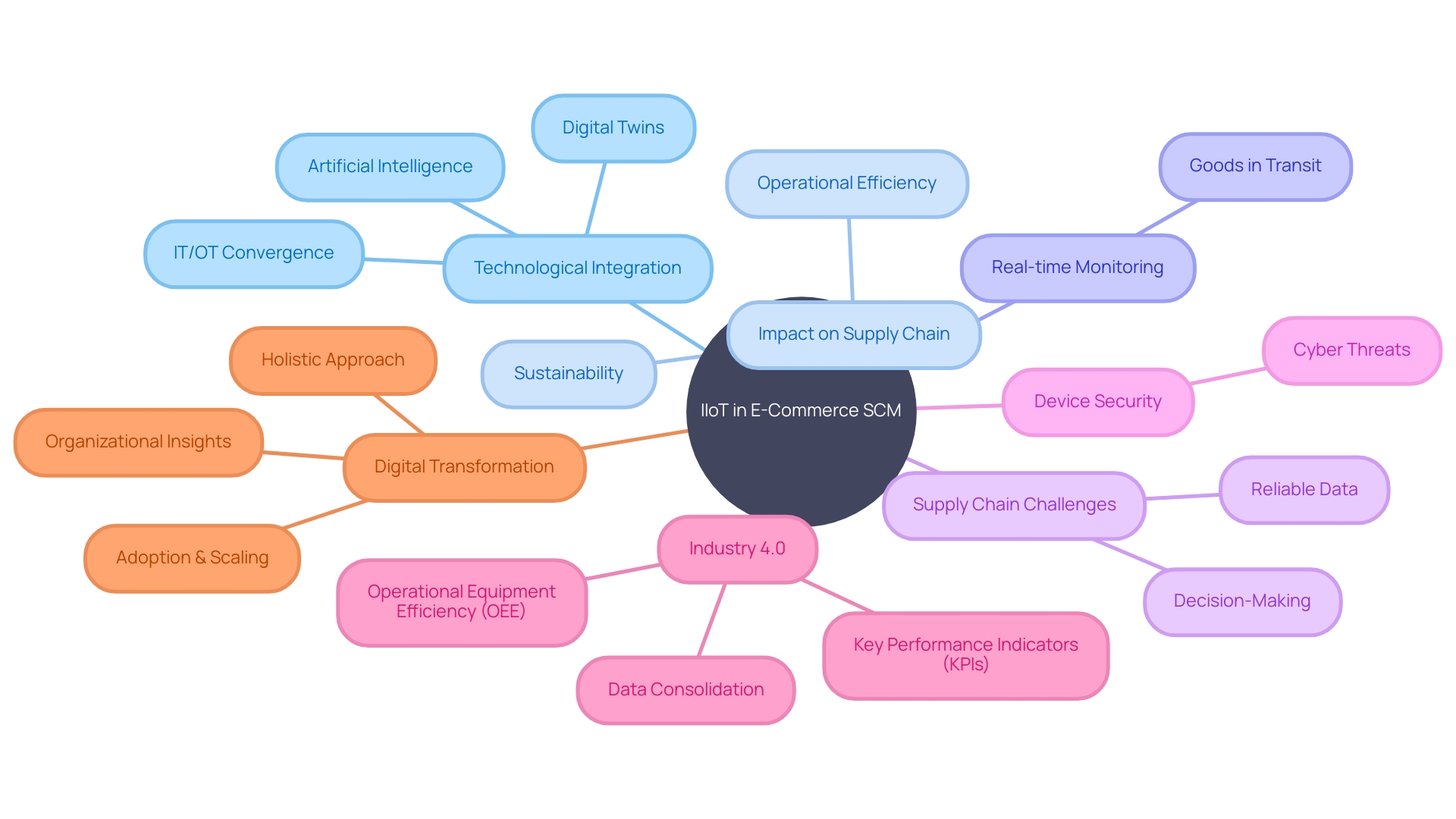
Inventory Management and Tracking
The integration of Industrial Internet of Things (IoT) technology into e-commerce operations transcends traditional inventory management, paving the way for real-time tracking and highly efficient supply chains. Sophisticated IIoT sensors, paired with RFID technology, allow for granular monitoring and control of inventory, ensuring that stock levels are precise and that products are replenished or dispatched without delay. This synergy of IIoT elements is particularly evident in the realm of retail robotics where automation is revolutionizing warehousing operations.
Robots, equipped with advanced sensors, are increasingly deployed to perform repetitive and precision-based tasks such as sorting, shelving, and retrieval of goods. Their contribution to inventory management is invaluable, minimizing errors, and significantly reducing holding costs. Moreover, the implementation of checkout-free stores, as exemplified by the Zippin-powered Dublin Town To Go store, reveals the potential for IIoT to enhance customer convenience and streamline retail operations.
As we look to the future, the intersection of AI, AR, and VR with IIoT technologies is anticipated to further personalize the shopping experience, making it more immersive and customer-centric. The challenges faced in retail operations, including equipment failures and inefficiencies, are being mitigated through the use of IIoT and advanced condition monitoring, ensuring that e-commerce platforms remain robust and responsive to consumer demands.
Enhanced Customer Experience through Personalization
Embracing the Industrial Internet of Things (IoT) is revolutionizing the e-commerce landscape. As demonstrated by industry leaders like Zara, the integration of AI and advanced analytics into operations is not just enhancing customer engagement but is also streamlining supply chains. With real-time data analysis enabled by technologies such as RFID tagging and machine learning, businesses can offer hyper-personalized experiences—right from tailored product recommendations to dynamic marketing strategies.
For instance, Zara's Just-In-telligent system exemplifies how a cohesive AI strategy can expedite response times to market changes, leading to impressive customer loyalty and a spike in online sales. Similarly, Gousto's case shows the transformative power of IIoT in operational efficiency. By adopting HighByte Intelligence Hub, the meal-kit company advanced its mechanical availability and reduced operating costs, furthering its sustainability goals.
Recent industry reports underscore the surge in in-store technology, with a focus on self-checkout systems through customer devices and kiosks, despite economic uncertainties. This growth mirrors the potential of IoT in enhancing the customer's shopping journey. Meanwhile, Pinterest's deployment of AI to improve body representation in image searches is a nod to the importance of inclusivity in e-commerce.
To stay competitive and foster industrial excellence, adopting IIoT for advanced condition monitoring is crucial. This strategic move not only mitigates the unpredictability of equipment failures but also aligns with operational goals like efficiency and cost savings. Leaders in the field have to weigh the pros and cons of various approaches, considering financial implications, IT requirements, and the practicalities of on-the-floor execution.
In summary, the fusion of IIoT with e-commerce operations is not just a trend but a keystone for businesses aiming to bolster efficiency, slash costs, and drive innovation—all while offering an exceptional customer experience.
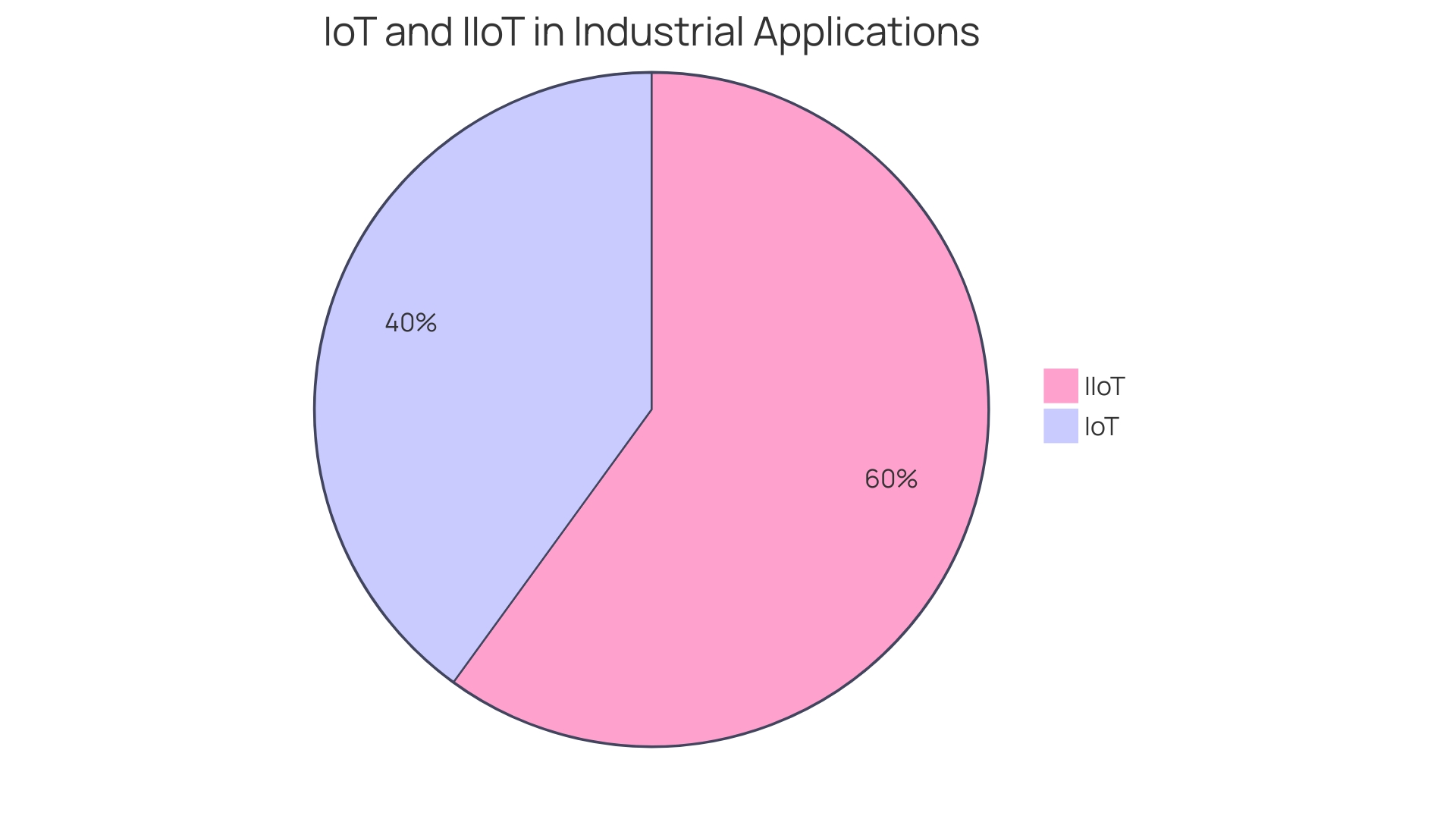
Real-Time Data Analytics for Decision Making
Harnessing the power of the Industrial Internet of Things (IIoT) has become essential for e-commerce businesses aiming to thrive in today's fast-paced market. With IIoT technologies, these businesses can tap into real-time data analytics, transforming vast amounts of data into actionable insights. This capability allows them to swiftly identify market trends, anticipate consumer needs, fine-tune their pricing strategies, and enhance operational efficiencies.
The real-time aspect means that e-commerce firms can now operate with unprecedented agility, responding instantly to the dynamic e-commerce landscape.
The importance of enriched, real-time data is underscored by a Salesforce survey, which revealed that 69% of customers expect companies to innovate their service delivery for convenience. This customer-centric approach necessitates an accurate, constantly updated view of inventory levels across various channels—a complex challenge that IIoT can address. By integrating data from multiple sources such as customer interactions, product performance, sales, and supply chains, e-commerce businesses can overcome traditional barriers to data access and quality.
The effectiveness of IIoT is not just theoretical. Consider the recent opening of the first checkout-free store in Dublin Airport, leveraging Zippin technology. This innovative application of IIoT uses cameras and weight-sensor shelving to detect purchases, offering a glimpse into the future of retail convenience and efficiency.
However, the journey to fully leverage IIoT is not without its challenges. The volume and veracity of data require stringent quality control to ensure integrity, as not all data is good data. As businesses implement AI and machine learning to manage their data, they must navigate issues like data completeness and the potential for siloed information, which can disrupt the creation of robust analytical models.
In response to these challenges, e-commerce businesses are increasingly prioritizing real-time data pipelines and stream processing. With customers expecting up-to-the-second updates and personalized experiences, the shift towards streaming data processing allows businesses to deliver content that matches the immediacy of consumer demands.
Ultimately, the role of data analysts in harnessing IIoT is pivotal. Their expertise in statistical analysis, data mining, and visualization, paired with programming skills in languages such as Python, R, or SQL, empowers them to distill complex data into strategic insights. These insights not only fuel smarter decision-making but also propel e-commerce businesses to the forefront of innovation and customer satisfaction.
Smart Warehousing and Logistics
Integrating Industrial Internet of Things (IoT) into e-commerce operations propels warehousing and logistics into the future. With the advancement of IoT, companies like Europris in Norway have transformed their logistics. By consolidating six warehouses into one state-of-the-art automated facility, they've constructed a logistics center with 65,000 pallet locations and 11 Vectura pallet cranes.
This seismic shift in how warehouses are run has streamlined their operations and set a new standard in the industry.
Smart warehousing, powered by IIoT, goes beyond mere storage. It's a symphony of interconnected technologies where every item is tracked with RFID, every movement is optimized by sensors, and every process is automated for precision. As seen with Europris, which continued its automation journey with the CycloneCarrier shuttle solution for light goods picking, the benefits are tangible.
This move not only bolsters efficiency but also adapts the business to the dynamic demands of the e-commerce domain.
Retail giants are recognizing the need for such innovations as well. With the advent of in-store technologies, such as electronic shelf labels provided by companies like Price to S Group's extensive retail network, the retail landscape is undergoing a significant transformation. These advancements are not just about keeping pace with the market but about setting the pace for efficiency, customer satisfaction, and profitability.
The essence of IIoT lies in creating a smarter, more connected, and more efficient operation. IIoT systems are complex, with high security and critical operational controls, but the payoff is substantial. As industry experts note, it's about enhancing productivity and safety across various sectors.
Retailers are not only prioritizing technological upgrades but are also tackling challenges such as staff retention, highlighting the comprehensive impact of IIoT on the industry.
Statistics underline the momentum of this transformation, with a clear movement towards digitalization in the manufacturing sector and beyond. As IoT Analytics defines Industry 4.0, it's about integrating data to achieve operational excellence and cost savings. The layered architecture of IoT, encompassing perception, network, and application layers, is reshaping supply chain management from the ground up.
Ultimately, the journey to digitalization through IIoT is a path marked by learning from peers, recognizing best practices, and scaling efficiently. The extensive analysis of case studies reveals how companies are leveraging digital transformation to their advantage. The key takeaway?
Whether it's upgrading ERP systems or implementing predictive maintenance, the journey is as critical as the destination in the era of IIoT-driven e-commerce.
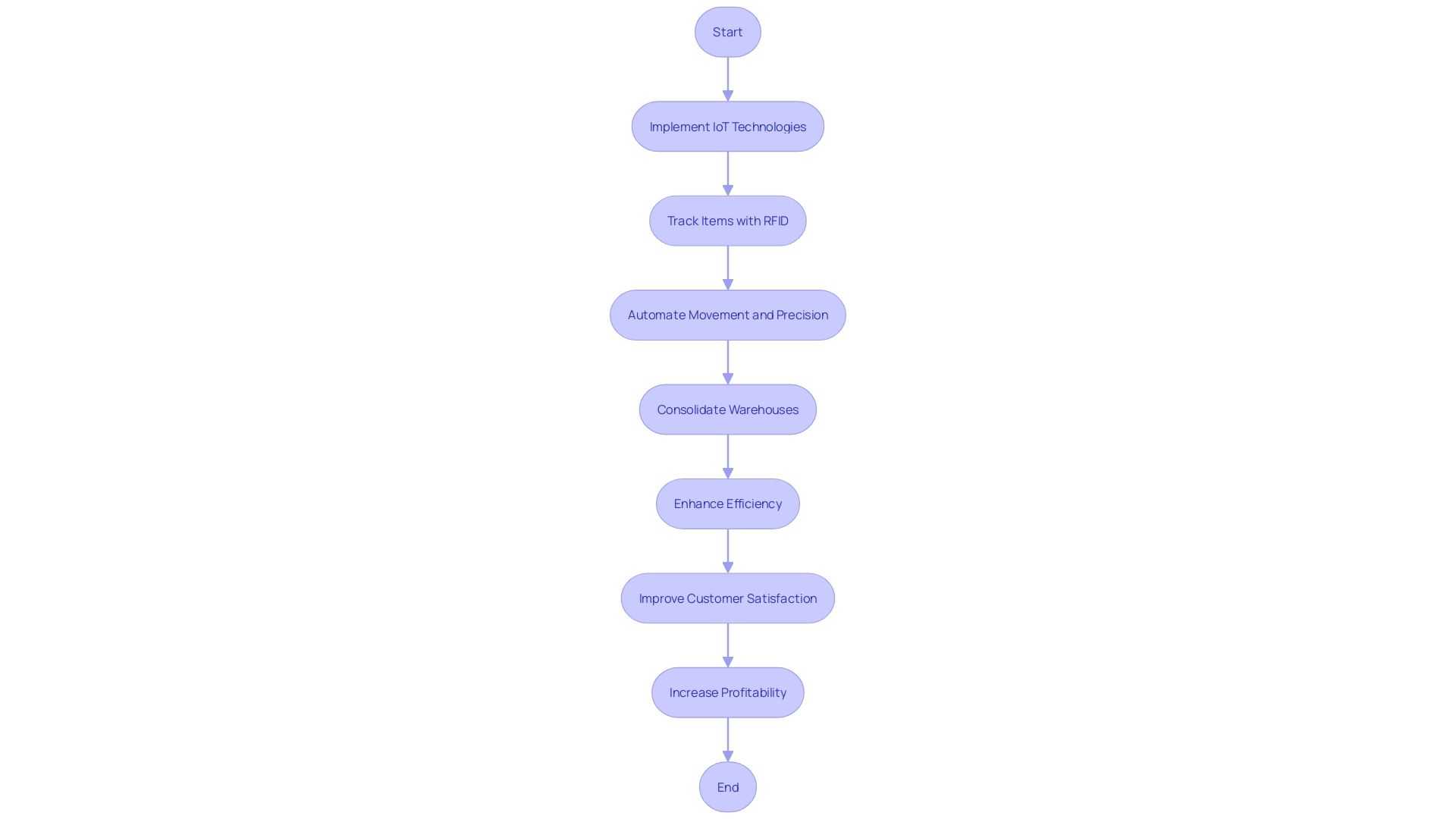
Cybersecurity Measures for IIoT Devices
When integrating IIoT devices into e-commerce operations, it's crucial to recognize that these devices, while powerful tools for efficiency and data collection, are also gateways for potential cyber threats. Cybersecurity must be a top priority as a breach can have disastrous effects, not just on operational integrity but also on customer trust. To mitigate these risks, businesses must adopt comprehensive cybersecurity measures, including encryption, authentication protocols, and frequent security audits.
For instance, the energy and manufacturing sectors, which are increasingly reliant on interconnected systems, are experiencing a notable volume of cyberattacks. These industries are learning the hard way that a lack of robust cybersecurity measures can lead to significant production disruptions and data breaches, resulting in heavy financial losses.
Moreover, research from Keyfactor highlighted that 97% of organizations face challenges in securing IoT and connected devices. This underlines the urgent need to address security vulnerabilities associated with IoT integration. Implementing a Software Bill of Materials (SBOMs) can aid in identifying and tracking software components and their origins, which is essential for risk assessment and mitigation.
In addition, as per the guide to IEC 62443-4-2, it's becoming clear that there is no one-size-fits-all approach to security. Instead, a phased, measured approach that evolves with emerging standards and tactics is recommended. This is in sync with the understanding that achieving 'perfect security' is a myth; what's required is a continuous evolution of security practices.
Data backups are also critical, as data compromise can lead to not only operational but also legal and financial repercussions. Cloud storage backup systems offer a secure and accessible solution, ensuring that data can be recalled and restored whenever necessary.
In essence, prioritizing cybersecurity in the world of IIoT is not just about protecting assets; it's about sustaining business continuity, safeguarding customer relationships, and maintaining a competitive edge in the demanding realm of e-commerce.
Energy Efficiency and Sustainability
Harnessing the transformative power of Industrial Internet of Things (IIoT) technologies is revolutionizing energy management in e-commerce. Through the integration of intelligent devices, such as sensors and autonomous equipment, e-commerce businesses are empowered to monitor and control their energy consumption in unprecedented ways. Real-time data analytics offered by IIoT applications provide actionable insights, enabling these businesses to pinpoint inefficiencies and optimize energy use.
This not only leads to significant cost savings but also contributes to a smaller carbon footprint, aligning with global sustainability goals.
As the climate crisis escalates, industries are compelled to re-evaluate their energy strategies, and the e-commerce sector is no exception. By leveraging IIoT, companies can transform renewable energy sources like solar panels and wind turbines into smarter, more cost-effective solutions. This shift towards energy-efficient operations is not just an operational upgrade; it's a vital step towards achieving Net Zero targets and combatting industrial carbon emissions.
Moreover, the embrace of Industry 4.0 technologies enables organizations to merge various data streams, enhancing Overall Equipment Effectiveness (OEE) and refining other critical production KPIs. This evolution is underscored by a dual approach to IIoT, where traditional on-premises infrastructure coexists with a strategic focus on efficiency and cost reduction.
E-commerce giants like Amazon are already setting the pace, with initiatives such as the Second Chance Store in London, which repurposes returned items, reflecting a commitment to sustainable practices. Such efforts not only resonate with environmentally conscious consumers but also reinforce a company's brand as a leader in sustainability.
The journey of digital transformation in the machine tool industry offers a blueprint for e-commerce businesses looking to bolster their sustainability efforts. By intelligently utilizing data to minimize waste and optimize resource use, the potential for enhancing productivity and reducing environmental impact is immense.
In summary, the integration of IIoT technologies in e-commerce is not only a pathway to improved energy management and cost savings but also a strategic move to elevate brand reputation and meet the expectations of today's eco-aware customer base.
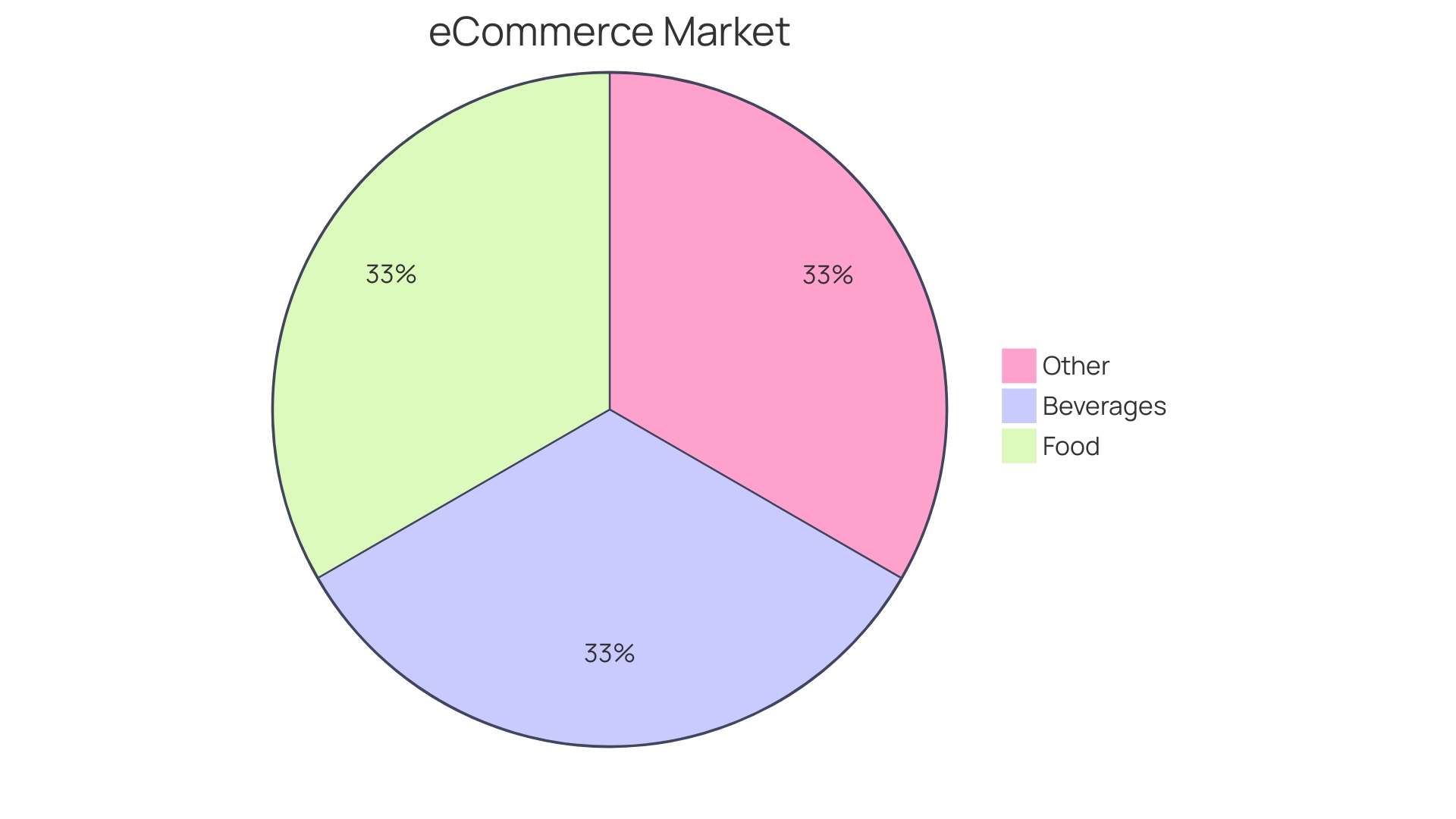
Call to Action
Harnessing Industrial Internet of Things (IIoT) technologies is transforming e-commerce by driving efficiency and enhancing the customer experience. These technologies, which encompass everything from smart interconnected devices to advanced data analytics, allow businesses to optimize supply chain operations and make informed decisions based on real-time data. As observed in various industry case studies, companies that have embraced IIoT are benefiting from improved operational efficiency and cost savings, indicating a clear competitive advantage in the e-commerce market.
In particular, the adoption of an upgraded Enterprise Resource Planning (ERP) system is frequently the first step toward a successful digital transformation. This aligns with the principles of Industry 4.0, which emphasize the integration of modern tech stack elements to achieve higher Overall Equipment Effectiveness (OEE) and other key performance indicators. Moreover, a recent analysis of 22 industrial digital transformation initiatives highlights the significance of digital strategies that include data architecture, predictive maintenance, and the use of AI and industrial 5G to streamline processes.
The potential of IIoT in e-commerce is further underscored by the projected growth in the smart home automation market, which is expected to reach $40 billion by 2020. This trend towards a more connected world mirrors the opportunities available to e-commerce operations. For instance, the opening of a checkout-free store in Ireland, powered by advanced technology, demonstrates the practical application of IIoT in creating seamless retail experiences.
The journey into IIoT for e-commerce is not without its challenges, yet the rewards are undeniable. By learning from the digitalization experiences of peers and adopting best practices, businesses can navigate common hurdles and scale their operations effectively. IIoT stands as a cornerstone for creating smarter, more profitable industrial operations, and e-commerce leaders are poised to reap the benefits by taking a strategic approach to its implementation.
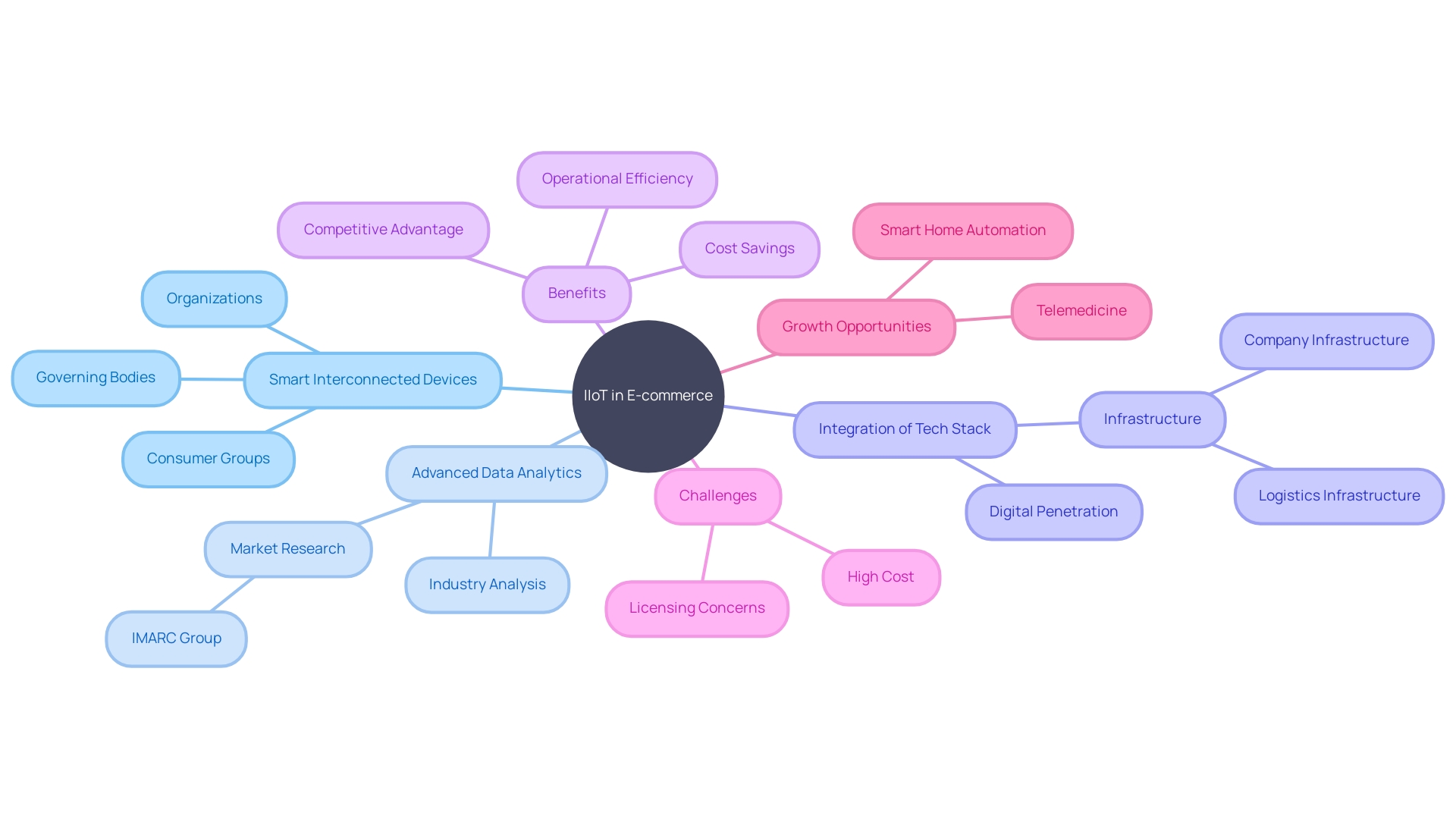
Conclusion
In conclusion, the integration of IIoT into e-commerce operations is crucial for businesses seeking success in the digital era. IIoT offers operational efficiency, supply chain visibility, real-time data analytics, and enhanced customer experiences. Prioritizing cybersecurity and sustainability measures is essential to ensure operational resilience and customer trust.
By adopting IIoT, businesses can streamline operations, make data-driven decisions, and meet evolving customer needs. The applications of IIoT in e-commerce, such as predictive maintenance, supply chain optimization, inventory management, and personalized customer experiences, are driving industry transformation. To fully leverage IIoT's potential, businesses must consider insights from stakeholders and adopt a strategic approach.
By learning from peers and prioritizing a holistic approach, businesses can navigate challenges and maximize the benefits of IIoT. In summary, IIoT is reshaping the e-commerce landscape, offering a competitive edge to businesses that embrace its potential. By integrating IIoT, businesses can optimize operations, make informed decisions, and deliver exceptional customer experiences in an increasingly digital and interconnected world.





